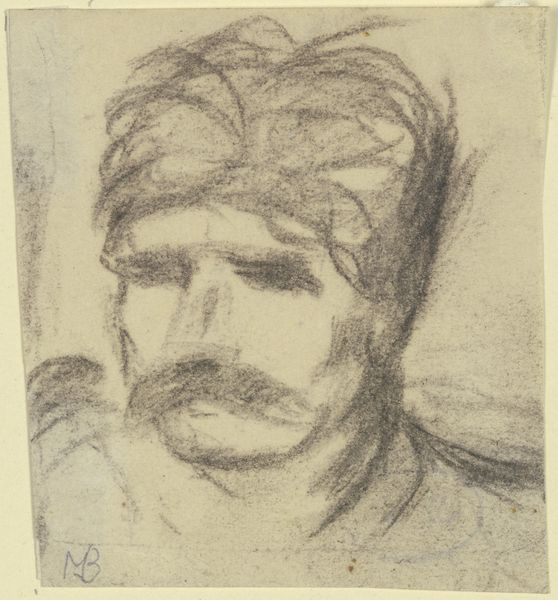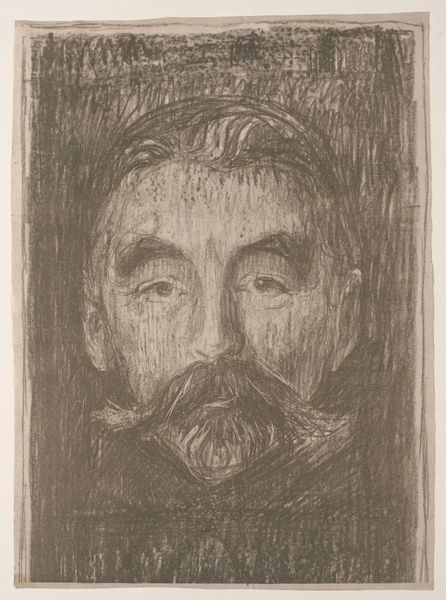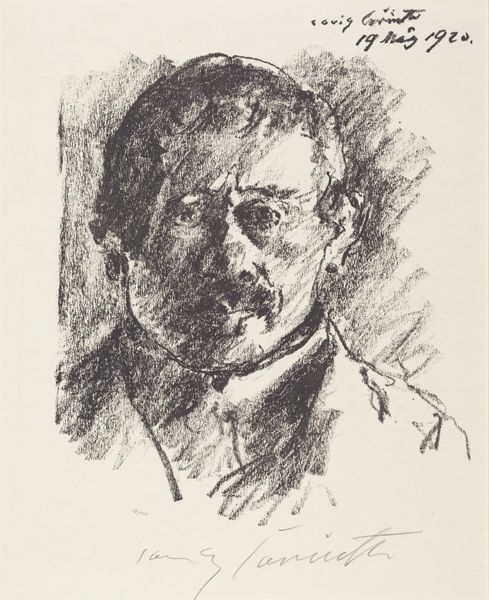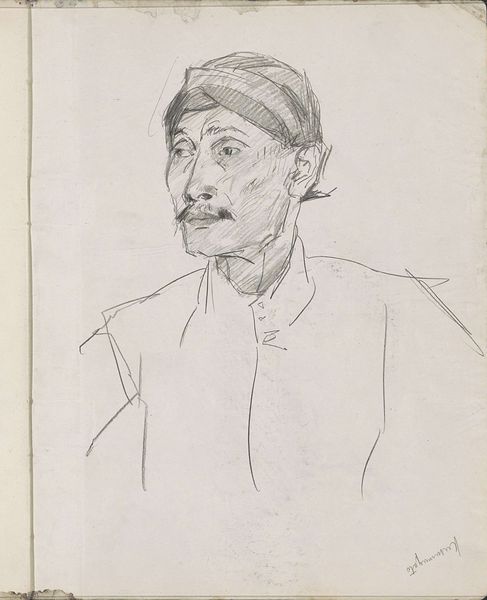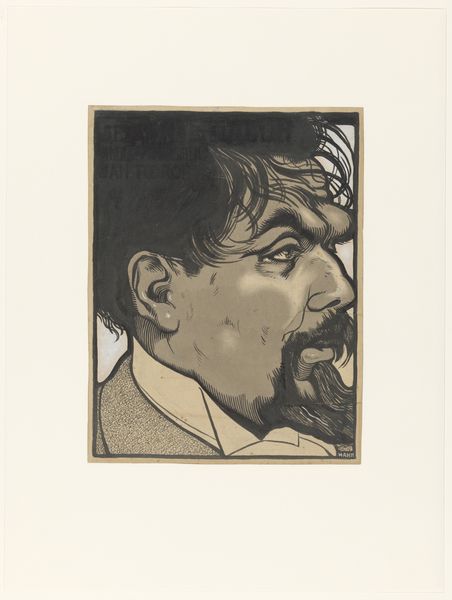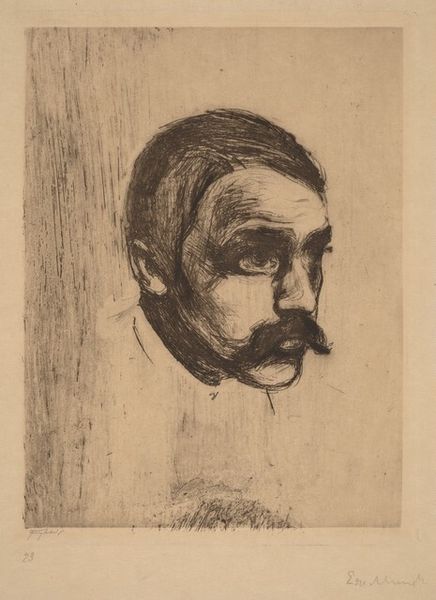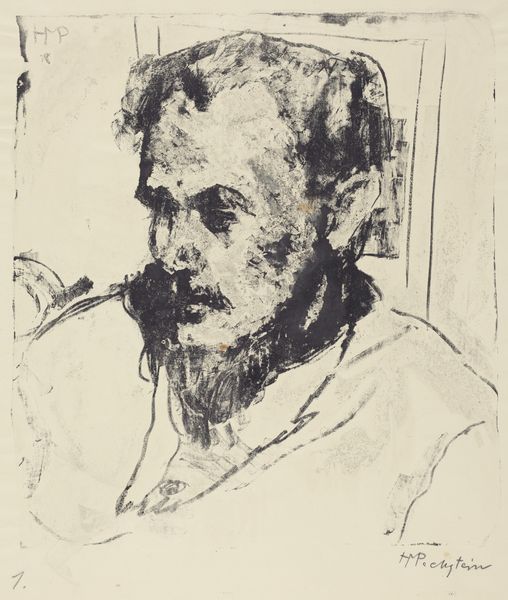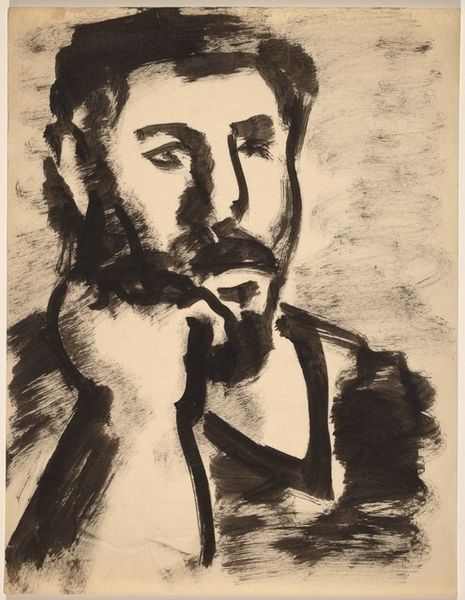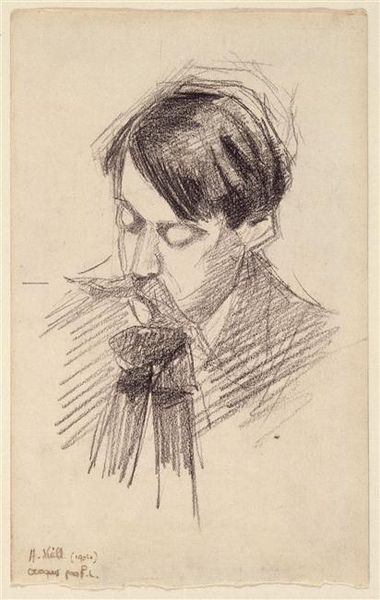
drawing, pencil, graphite
#
portrait
#
pencil drawn
#
drawing
#
self-portrait
#
pencil sketch
#
pencil drawing
#
pencil
#
expressionism
#
graphite
#
portrait drawing
Dimensions: height 225 mm, width 225 mm
Copyright: Rijks Museum: Open Domain
Curator: Gazing at us from 1912, this is "Self-portrait" by Samuel Jessurun de Mesquita, rendered in pencil. It resides here at the Rijksmuseum. Editor: Brooding! The eyes grab you immediately. Intense and perhaps a touch confrontational. It feels less like a mirror image and more like a declaration. Curator: Absolutely. Considering de Mesquita's tragic fate—he and his wife perished at Auschwitz—it's tempting to search for premonitions in those eyes. But maybe that's too simplistic. Editor: Tragedy undeniably colours our view, but let’s stick to the visual elements. The stark contrasts, the raw, almost unfinished quality of the lines... it amplifies that sense of immediacy. Did he normally work in this medium? Curator: Largely, yes. He taught graphic techniques, and was known for his woodcuts and lithographs, so the reliance on line and shadow carried across. Notice how the background almost dissolves, putting full focus on the face. Editor: And how! It's as if the very act of observing him forces him into existence. Semiotically speaking, his moustache could almost function as a barrier. Impenetrable, even. It draws my eyes in the negative space around the lines defining it. Curator: Perhaps a defense mechanism. Or a flourish of self-definition! His student, M.C. Escher, learned a great deal from him, though Escher's work took a vastly different direction. You see echoes of that commitment to graphic precision here, just stripped back. Raw emotion distilled. Editor: So, we’re left pondering what defines selfhood when reduced to essentials – the searching gaze, that striking moustache floating in space, and the ghost of the artist, lingering just beyond the frame of a deceptively simple piece. Food for thought. Curator: A glimpse, perhaps, into a soul about to face unimaginable horrors, rendered with startling, affecting vulnerability.
Comments
No comments
Be the first to comment and join the conversation on the ultimate creative platform.
